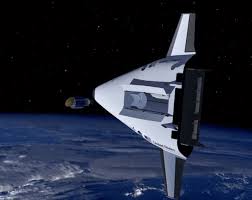
Breaking News
 Rule by Thieves: The Police State Becomes a Pay-to-Play Shadow Government
Rule by Thieves: The Police State Becomes a Pay-to-Play Shadow Government
 What Has Bitcoin Become 17 Years After Satoshi Nakamoto Published The Whitepaper?
What Has Bitcoin Become 17 Years After Satoshi Nakamoto Published The Whitepaper?
 These Are The World's Most Militarized Economies
These Are The World's Most Militarized Economies
Top Tech News
 Japan just injected artificial blood into a human. No blood type needed. No refrigeration.
Japan just injected artificial blood into a human. No blood type needed. No refrigeration.
 The 6 Best LLM Tools To Run Models Locally
The 6 Best LLM Tools To Run Models Locally
 Testing My First Sodium-Ion Solar Battery
Testing My First Sodium-Ion Solar Battery
 A man once paralyzed from the waist down now stands on his own, not with machines or wires,...
A man once paralyzed from the waist down now stands on his own, not with machines or wires,...
 Review: Thumb-sized thermal camera turns your phone into a smart tool
Review: Thumb-sized thermal camera turns your phone into a smart tool
 Army To Bring Nuclear Microreactors To Its Bases By 2028
Army To Bring Nuclear Microreactors To Its Bases By 2028
 Nissan Says It's On Track For Solid-State Batteries That Double EV Range By 2028
Nissan Says It's On Track For Solid-State Batteries That Double EV Range By 2028
 Carbon based computers that run on iron
Carbon based computers that run on iron
 Russia flies strategic cruise missile propelled by a nuclear engine
Russia flies strategic cruise missile propelled by a nuclear engine
 100% Free AC & Heat from SOLAR! Airspool Mini Split AC from Santan Solar | Unboxing & Install
100% Free AC & Heat from SOLAR! Airspool Mini Split AC from Santan Solar | Unboxing & Install
Discussion of 80 Gigapascal super material potential for energy and space

Nextbigfuture wrote this material which has been made in a chinese lab. The material is 20 times stronger than Kevlar.
The material would enable flywheel energy storage with jet engine or rocket like energy density.
Adam Crowl indicates super flywheels would be better than rocket fuel when oxygen is factored
For carbon nanotube material, with a density of about 1,800 kg/m3, and an operating maximum stress of 54 GPa, that means a specific energy density of 7.5 MJ/kg. For comparison a kilogram of natural gas represents about 50 MJ of chemical energy, if fully burned. However that comparison neglects the efficiency that the chemical energy can be turned into useful work. Flywheels convert their stored energy into electricity at very high efficiency – 95% or so. Running a gas powered generator turns maybe 20% of the gas's chemical energy into electrical energy.

 Known vs Unknown
Known vs Unknown

